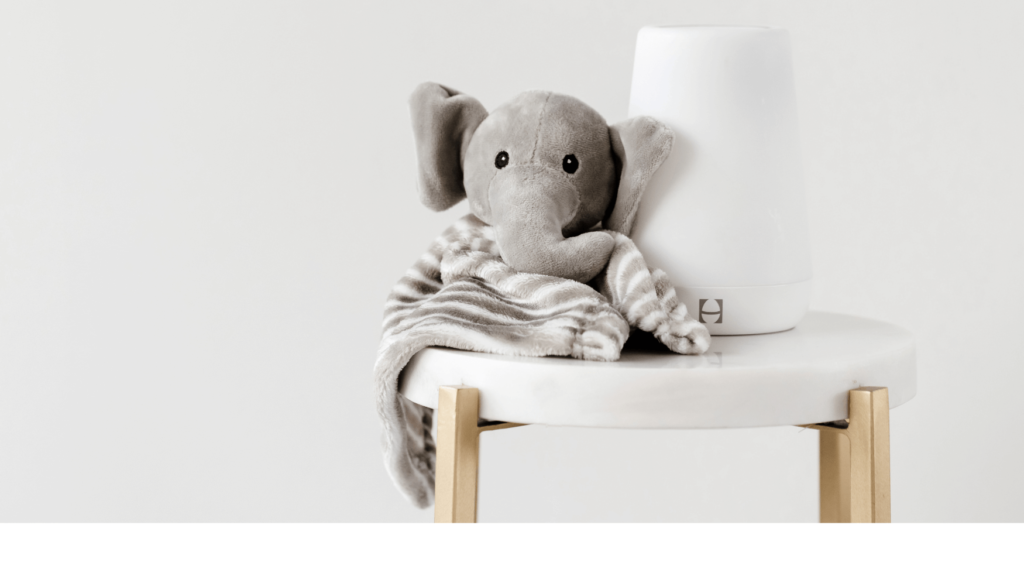An okay-to-wake clock is a clock that uses colors to visually cue a child’s brain that it’s time for them to start the day. These clocks go by several names: okay-to-wake clock, time-to-rise clock, color-changing clock, sleep training clock, and toddler alarm clock, just to name a few. They are an excellent way to reinforce routines and sleep expectations in a way that children understand.
When should I start using one?
An okay-to-wake clock is most effective for a child over 3 years old, however, it can also be helpful to use for older infants, to lay the foundation for routine and color recognition. If you still have a baby or young toddler in the crib, you can use an okay-to-wake light by turning it green from your phone (if your clock has this feature) right before you enter their room. That way your child will begin to associate that green means they are starting their day. Once it’s time for them to transition to a bed, they will already have a sense of what the color means, and it will make it easier for them to grasp the concept and follow directions.
Many parents choose to begin using an okay-to-wake clock once their child makes the transition from crib to bed, which is often around 3 years old.
Which clocks do you recommend?
Here are a few favorite okay-to-wake product options:
- Hatch Rest: This light is Bluetooth-enabled and doubles as a sound machine. You can easily change the colors, brightness, and sounds from your phone.
- Little Hippo Mella Clock: This toddler clock has the actual time on the clock, plus a programmable light and changing faces to indicate sleep versus wake time. It’s not as customizable as the Hatch, but is a favorite for preschoolers who are learning to recognize numbers, or if you are looking for something that does not connect to Bluetooth
How should I program it?
Some okay-to-wake clocks can also act as a night light. If your child doesn’t need a night light, you can leave the clock off during sleep times and only use it in the morning. Imagination and fear do not develop until around age 2.5-3. This means that most children ages 2 and under sleep perfectly fine in pitch black all night long, which is great to support their sleep! Children ages 2.5 and up may start expressing fear of the dark, and using a dim nightlight can help. If you do decide to use your color-changing clock as a night light, I recommend using an orange or red color as a nightlight during designated “sleep time”, because it is the least disruptive to sleep. Blue and bright white light can actually inhibit melatonin production. If the clock allows for it, set the night light color to the dimmest possible setting.
For their wake-up time, most parents use green. Green means go! This is an easy color for a child to associate with the start of the day.
How can I get my toddler to follow the clock?
When first starting to use the clock, have it turn green at a realistic time – around when they typically wake up. You want to set your child up for success, and it’s not likely that they will be able to wait in their room for 20 minutes on the first day of using the new clock.
Explain to your child what the clock means, and role-play with them! During the day, practice getting out of bed when the clock turns green and staying in bed when the clock is off or on the designated color for sleep. Practicing will help ensure they understand the expectations.
The next morning, when they come out of their room (or you get them from their room), acknowledge their efforts! Praise them for doing such a great job listening to their clock. Then, slowly set the clock back by 5-10 minutes per day until you reach your desired wake-up time. It’s reasonable to expect a toddler to stay in their room for about 20-30 minutes after they wake up prior to their clock turning green.
Example: Let’s say your child typically wakes up for the day at 6 am, but you want to use the okay to wake clock to have them stay in their room. At first, set it to turn green at 6 am. Once they have one to two days of success with the clock, slowly push back the time that the clock turns green. Push it back 5-10 minutes each day until you get to 6:30 am.
Remember, the goal isn’t necessarily to get them to sleep longer but to remain in their room until a more reasonable hour of the morning.









